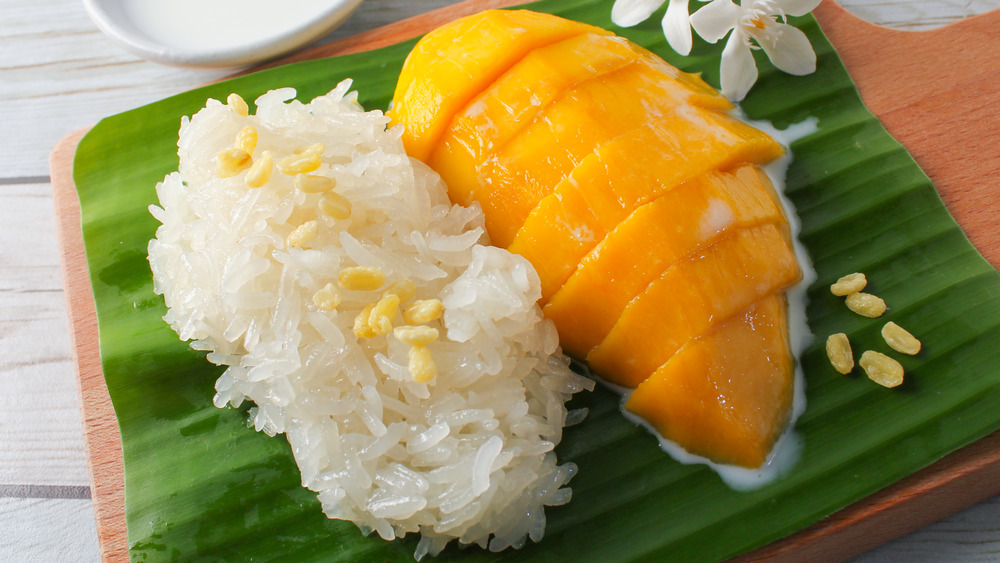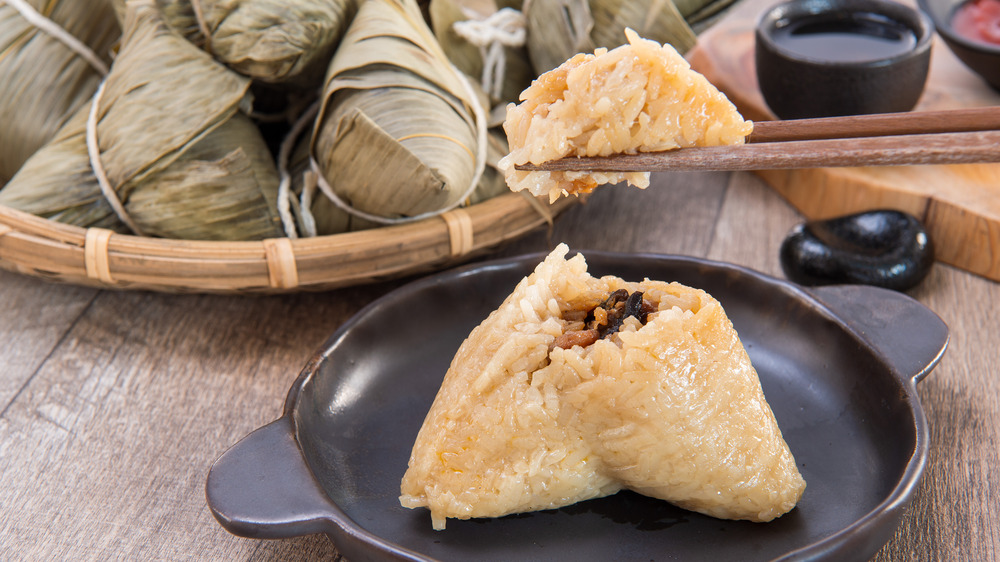The Real Difference Between White Rice And Sticky Rice
If you thought sticky rice was just the gummy gunk left clinging to your pot after making a big batch of stir fry, there's actually more to it. (Although, that stuff is an absolute nightmare to clean out!) Sticky rice, in truth, is a different grain altogether.
According to HuffPost, sticky rice (or more formally, glutinous rice) is a short-grain style grown in South East Asia. Whereas, scientifically speaking, white rice is comprised of two starch molecules — amylopectin and amylose — sticky rice mainly just has the amylopectin. The compound breaks apart when added to hot water (via Food Republic), and the result is rice that then "sticks" together.
Sticky rice is a staple in cuisines of Northern Thailand and Laos where, according to Smithsonian Magazine, because of its chunk-style texture, you can use a block of it as a "bread-like dipping implement." That means, if you love Asian food but are intimidated by using chopsticks in public, opting for Thai or Laos cuisine might be a good strategic move to save some face.
There's so many sticky rice dishes to savor
If you tend to associate grains with savory dishes, you might be surprised to learn there's one really popular dish made with sticky rice — and it's a dessert. Mango On Sticky Rice or Kow Neuw Mamuang is a texture-filled sweet combo; in a recipe from Thai Table, you can see how easily it's made with mango, coconut milk, salt, sticky rice, and sugar. Extra tip: If you're having trouble finding sticky rice in the grocery store, look for packages labeled "Thai," "sweet rice," or even "glutinous rice" (via Food52).
Another fun option to prepare with this grain is Zongzi aka Chinese Sticky Rice Dumplings. These little goodie packets are wrapped in bamboo and are traditionally consumed during the Dragon Boat Festival, a cultural celebration observed on the fifth day of the fifth lunar month in the Chinese calendar (per Travel China Guide). In fact, the festival is sometimes even referred to as the Zongzi Festival. According to Travel China Guide, the ingredients of Zongzi can vary quite a bit based on the preparation preferences of different regional locations, and can vary from sweet stuffings like red dates and red bean paste to savory fillings including meats and fish. If you're lucky enough to have an opportunity to try these rice bundles out, just be sure to remove the bamboo leaves before taking a bite!

